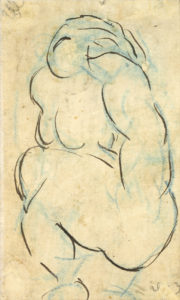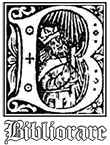Vincent VAN GOGH (1853 - 1890) — Head of a man wearing a hat (Tête d'homme au chapeau), vers 1886 - 1887 — Crayon sur papier Signé en bas à droite Inscrit et signé à l'encre « certifié de Vincent Van Gohg [sic]/Émile Bernard » en bas...
Description
PROVENANCE
- Probablement : Collection Émile Bernard Vente, Impressionist and Modern Drawings and Watercolours, Sotheby's, Londres, 4 avril 1990, lot 105.
- Collection particulière, France (acquis au cours de la vente précédente).
- Vente, Art impressionniste et moderne, Sotheby's, Paris, 8 décembre 2011, lot 69.
BIBLIOGRAPHIE
- Lettres de Vincent Van Gogh à Émile Bernard, Paris : Ambroise Vollard, 1911, reproduit planche XLIII (titré Croquis (tête d'homme).
- Jacob Baart de la Faille, The Works of Vincent van Gogh: his paintings and drawings, Amsterdam : Meulenhoff International, 1970, décrit sous le n°SD1715 et reproduit p. 583 (titré Sketch of a man's head et daté « 1887 »).
- Jan Hulsker, The Complete Van Gogh : paintings, drawings, sketches, Oxford : Phaidon, 1980, décrit sous le n°1161 et reproduit p. 253 (titré Head of a Man with Hat).
- Jan Hulsker, The New Complete Van Gogh : Paintings, Drawings, Sketches: revised and enlarged edition of the catalogue raisonné of the works of Vincent Van Gogh, Amsterdam et Philadelphie : J.M. Meulenhoff et John Benjamins, 1996, décrit sous le n°1161, p. 252 et reproduit p. 253 (titré Head of a Man with Hat et daté « Summer 1886 »).
- Marije Vellekoop et Sjraar van Heugten, Vincent Van Gogh Drawings, Volume 3, Antwerp & Paris, 1885 - 1888, Van Gogh Museum, Amsterdam : Lund Humphries Publishers, 2001, décrit sous le n°293b et reproduit p. 239 (titré Head of a man wearing a hat et daté « 1887 ») “Paris was famed for the variety of public entertainment it offered in the losing decades of the 19th century. People went to the theatre, the opera or the ballet, listened to concerts, danced in one of the many dance-halls, or relaxed during an evening at a ‘café-concert'. The music was provided by orchestras or smaller ensembles. The musicians, the other performers and the public were depicted on many occasions in paintings and drawings, particularly by the Impressionists (fig. 293a), which Van Gogh would undoubtedly have known. Although there is little information about how Van Gogh amused himself in his spare time, it can be assumed that he, too, visited these establishments, given the large number of them and his friendship with artists like Toulouse-Lautrec. The only Paris works recording such visits are the five drawings discussed here and cat. 300. The musicians, who did not pose for the drawings, were captured swiftly and convincingly. [...] All five are rapid sketches in which parallel lines were used to capture the figures. This vigorous style is also found in various other works from the Paris period, such as Dying slave and figures at a table (cat. 283), Study for Woman sitting by a cradle (cat. 306) and Head of a man wearing a hat (fig. 293b). [...] The coloured chalk (and it should be pointed out that it is not known precisely when Van Gogh started using it) combined with the swift execution provide the evidence for dating the group in the first half of 1887 after all. That broad span can be narrowed to the first quarter of the year, because a drawing related to the group, Head of a man (possibly Theo van Gogh) (cat. 299), left an impression on a neighbouring sheet which Van Gogh only used in the spring or summer of 1887 for Study for ‘Woman sitting by a cradle' (cat. 306). Confirmation that the drawings were not made before then is provided by the small sketch, Head of a man wearing a hat (fig. 293b), which was also executed with firm, broad strokes. Van Gogh drew it in one of his sketchbooks, signed it, tore it out and gave it to his friend Emile Bernard, with whom he only struck up a friendship in the early months of 1887.” Marije Vellekoop et Sjraar van Heugten, Vincent Van Gogh Drawings, Volume 3, Antwerp & Paris, 1885 - 1888, Van Gogh Museum, Amsterdam : Lund Humphries Publishers, 2001, pp. 231 - 238 “Among the work Vincent did in Paris is a series of hastily done sketches of musicians and other figures and heads (1151-63), a rather unexpected new subject. The only things more or less comparable are a few sketchbook sheets from the Antwerp period, such as the scenes in a dance hall (968 and 969). They are somewhat humorous sketches, probably done very rapidly, with forceful parallel lines that aptly capture the subjects and their attitudes.” Jan Hulsker, “Drawings of the Human Figure”, in The New




